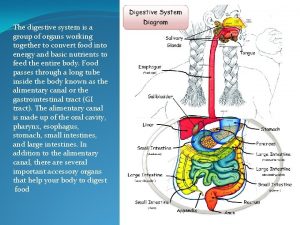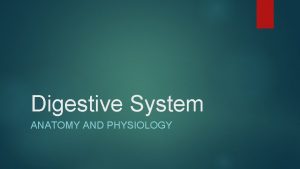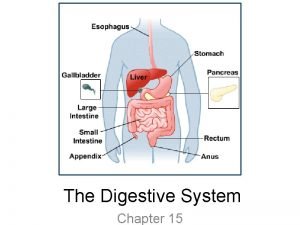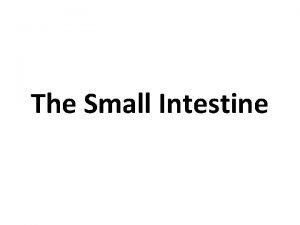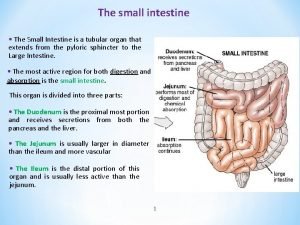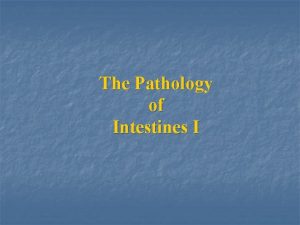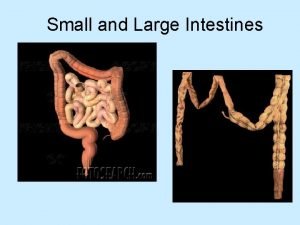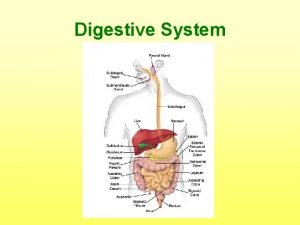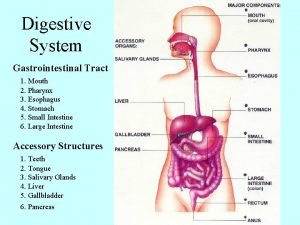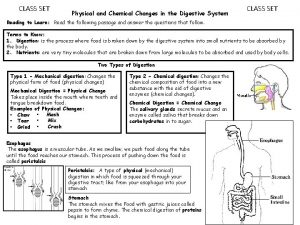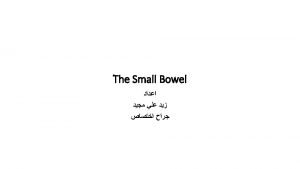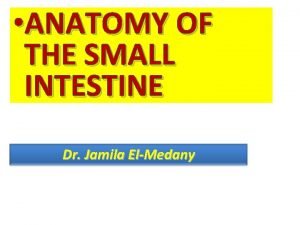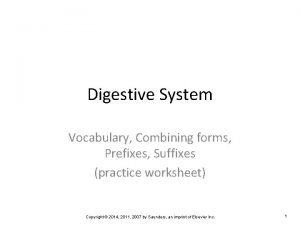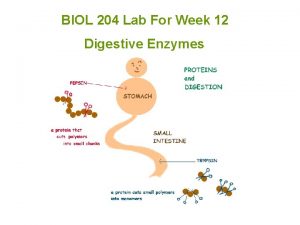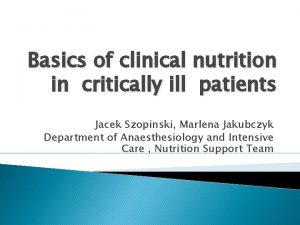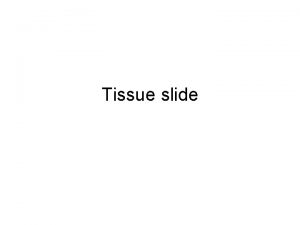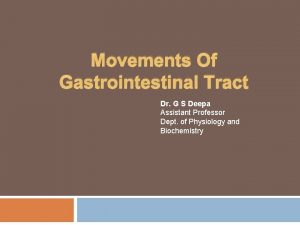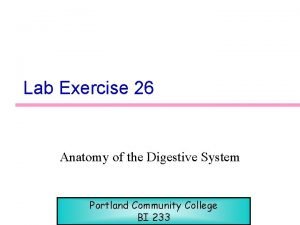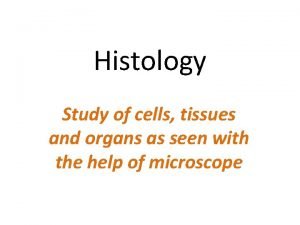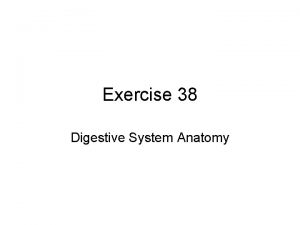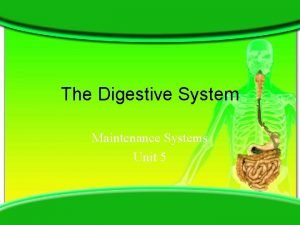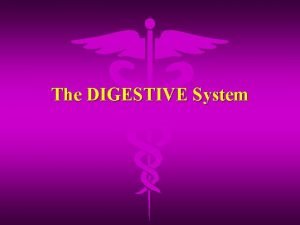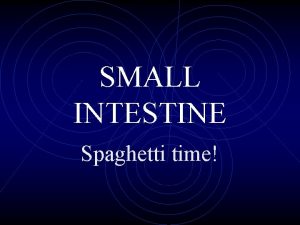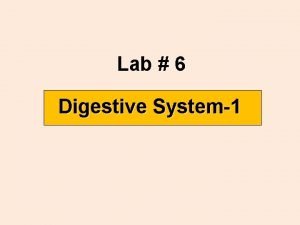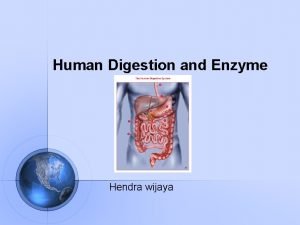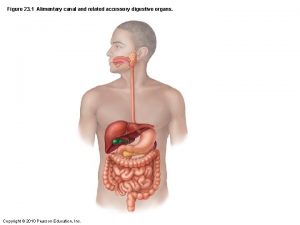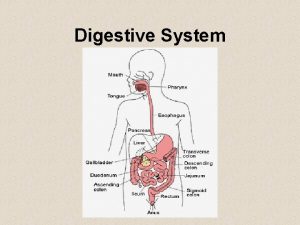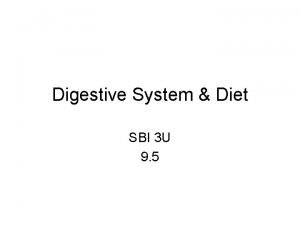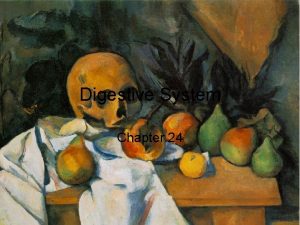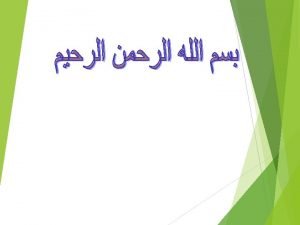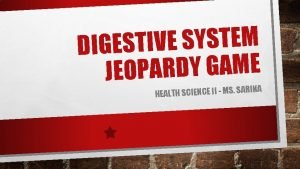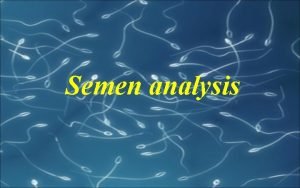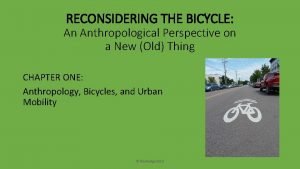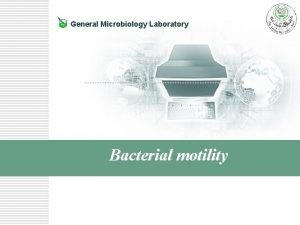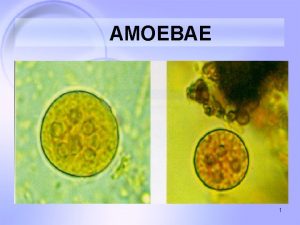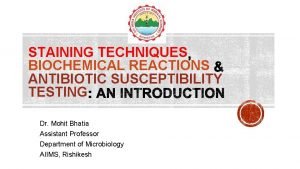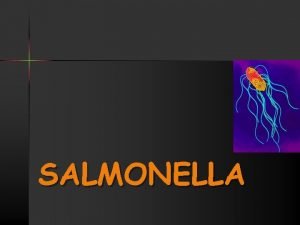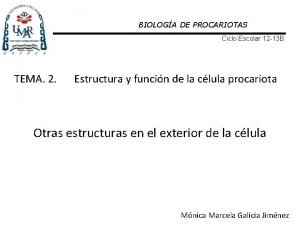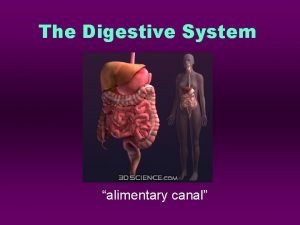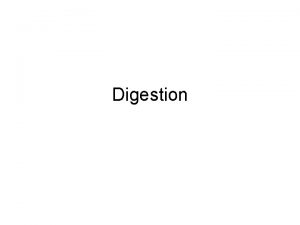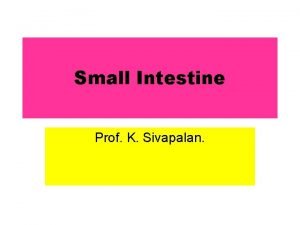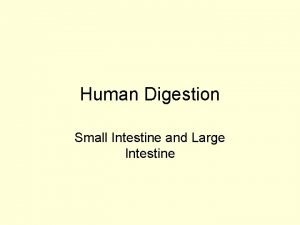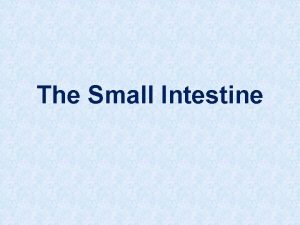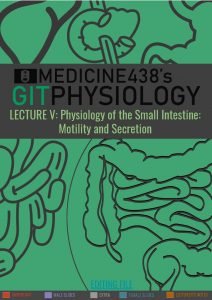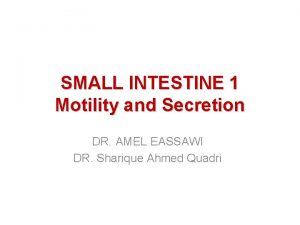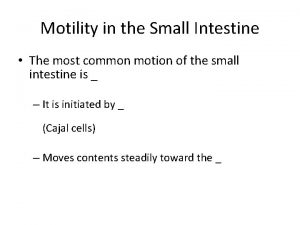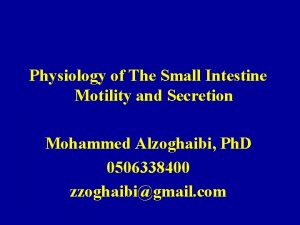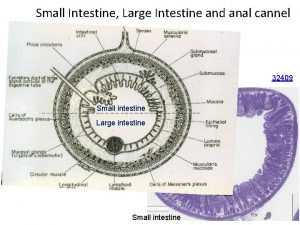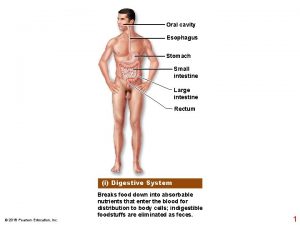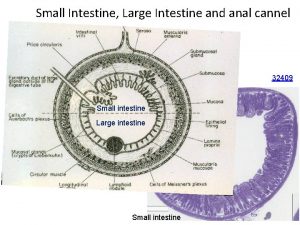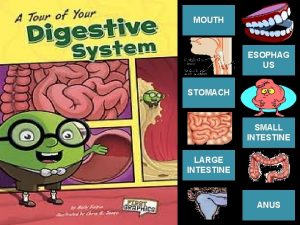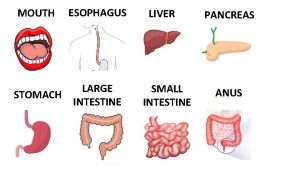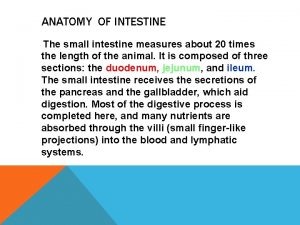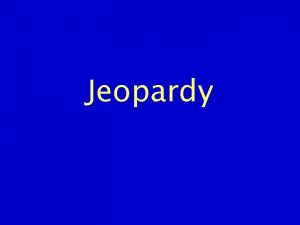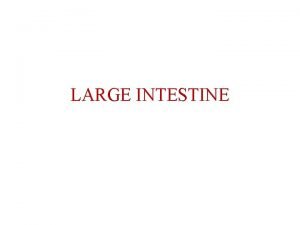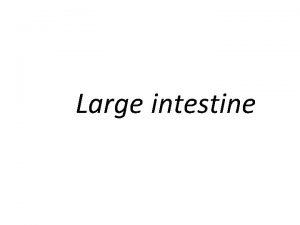IV MOTILITY OF THE SMALL INTESTINE 1 Function














































- Slides: 46

IV MOTILITY OF THE SMALL INTESTINE 1

Function of Intestinal Motility (1)To mix chyme with digestive secretion (2)To bring fresh chyme into contact with the absorptive surface of the microvili (3)To propel chyme toward the colon 2

Contractions of Intestinal Smooth Muscles • Occur automatically in response to endogenous pacemaker activity. • Rhythm of contractions is paced by graded depolarizations called slow waves. • Slow waves produced by interstitial cells of Cajal. • Slow waves spread from 1 smooth muscle cell to another 3 through nexuses.

Cells and Electrical Events in the Muscularis Insert fig. 18. 16 4

5

Contractions of Intestinal Smooth Muscles • When slow waves above threshold, it triggers APs by opening of VG Ca 2+ channels. • Inward flow of Ca 2+: • Produces the upward depolarization phase. • Stimulates contraction of smooth muscle. • Repolarization: • VG K+ channels open. • Slow waves decrease in amplitude as they are conducted. • May stimulate contraction in proportion to the magnitude 6 of depolarization.

+30 Vg K+ Channel Vg Ca++ Channel -55 Intestinal Smooth Muscle Action Potential 7

Contractions of Intestinal Smooth Muscles • Parasympathetic NS, stretch and gastrin increase the amplitude of slow waves. • Stimulate APs. • SNS decrease APs. 8

Types of small intestinal movement 1. Tonic contraction: the base of the other contractions 2. Segmentation contractions (1) def. When a portion of the small intestine becomes distended with chyme, the stretch of the intestinal wall elicits a rhythmical contraction and relaxation of localized circular muscles spaced at intervals along the intestine, (2) function: mix the chyme with the digestive juice increase its exposure to the mucosal surface 9

Types of small intestinal movement 3. Peristalsis: propels the small intestinal contents towards the large intestines peristaltic rush:initiated by the harmful stimulation 4. MMC: Occurs during fasting state moves any undigested material still remaining in the small intestine into the large intestine prevents bacteria from remaining in the small intestine long enough to grow and multiply excessively 10

Segmentation: mix contents to promote digestion & absorption 11

Peristalsis • Distinctive pattern of smooth muscle contractions that propels foodstuffs distally through the esophagus and intestines • Mediated by…. • Local, intrinsic nervous system • Ex: peristalsis is not affect to any significant degree by vagotomy or sympathectomy 12

Small Intestinal Motility Peristalsis: movement along the tract 13

Peristalsis 14 Figure 24. 4

peristalsis 15

Peristalsis of the small intestine 16 http: //medweb. bham. ac. uk/research/toescu/Teaching/Overview. GITY 2. html

Peristalsis – law of intestine 17 Berne et al. , 2004

Peristalsis – law of intestine 18 Berne et al. , 2004

Peristalsis – law of intestine 19 Berne et al. , 2004

Peristalsis – law of intestine 20 Berne et al. , 2004

Peristalsis – law of intestine 21 Berne et al. , 2004

Peristalsis – law of intestine • Bolus of food →Mechanical distension and mucosal irritation → stimulates afferent enteric neurons → 2 effects 1. Excitatory motor neurons above the bolus activated → contraction of smooth muscle above the bolus • Via Ach, substance P 2. Inhibitory motor neurons → stimulate relaxation of smooth muscle below the bolus • Via nitric oxide, vasoactive intestinal peptide and ATP 22

Control of Intestinal Motility – Neuronal Mixing – segmentation Frequency set by slow waves (12/minute duodunum) additional control: myenteric plexus Propulsion – peristalsis Local reflex – stretch causes relaxation distal and contraction proximal (Bayliss – Starling law of the intestines) Moves bolus through intestines Intestino-intestinal reflex – extrinsic nerves Local stretch in one area inhibits contraction in rest of 23 bowel

Movement in Small Intestine Peristalsis (ou propulsivos) e Segmentation (mixing) 24 http: //medweb. bham. ac. uk/research/toescu/Teaching/Overview. GITY 2. html

Central and peripheral control of contractile patterns Vagal centre Intestinal Sensory neurons wall Vago-vagal reflexes Interneurons Integrating circuits Motorneurons Program circuits Contractile patterns Enteric nervous system Intestinal lumenl Peptide (CCK) Receptors Glucose - Osmolality Long chain fatty acids Amino acids Luminal stimuli elicit vago-vagal reflexes which activate integrating and program circuits of the enteric nervous system. These activate specific motorneurones responsible for specific contractile 25 patterns.

Control of Intestinal Motility – Hormonal Gastrin CCK Secretin + motility -- Glucagon 5 -HT VIP Motilin GIP 26

Ileocecal Valve • What it is • Opening to large intestines • Function: (1) prevent the repulsion (2) control the emptying • normally closed. Short-range peristalsis in terminal ileum and distension relaxes IC sphincter --> small amount of chyme is squirted into the cecum. • Distension of cecum contracts IC sphincter. • Gastro-ileal reflex: enhances ileal emptying after eating. 27 • The hormone gastrin relaxes ileocecal sphincter.

V. GASTROINTESTINAL MOTILITY DURING FASTING STATE 28

Gastric motility on fasting “Migrating Motor Complex, MMC” Occurs on fasting To clear undigested food particles Peristaltic contractions sweep down stomach and duodenum – pylorus relaxes Pattern of contraction approx every 90 min Slow peristaltic waves sweeping whole of GI tract Thought to be controlled by motilin 29

The interdigestive motility consists of three phases III Interdigestive Cycles Phases II I Phase III Stomach Phase III Pylorus Duodenum Jejunum Ileum Accumulation of residues of chyme Phase II Phase I Contraction of reservoir Forceful peristaltic waves Ab mi oral gra tio n Motor quiescence of stomach and duodenum III Phase II Sporadic peristaltic waves Segmenting contractions and single peristaltic waves Motor quiescence Phase III The phase III of the migrating motor complex (of dog) Originates simultaneously at the stomach and duodenum 30 Migrates within 90 to 120 minutes along the small intestine

MMC(migrating motor complex) • PhaseⅠ: Almost have no contractions • PhaseⅡ: have contractions, only have few • PhaseⅢ: have continuous contractions 31

Migrating myoelectric Complex 32

33

Gastric phase III consisting of 1 - 3 forceful contractions Gastric phases III Middle Antrum 0 mm Pyloric diameter 6 mm Duodenal bulb Duodenum 1 min A P P P Stomach is cleaned of residues of chyme and secretions. The antral waves are associated with a wide opening of the pylorus and inhibition of duodenal contractions followed 34 by duodenal peristaltic waves occurring at maximal frequency.

Phase III of the interdigestive” (MMC) Jejunal phase III (MMC) oral aboral Aboral migration of phase III 1 minute Velocity of the peristaltic waves Rectangles: strain gauge transducers, Data of dog. 35

Phase III (MMC) of the small intestine Intestinal phase III Time oral (abo ut 20 sec) Successsive peristaltic waves Chyme Slow aboral migration of phase III aboral The peristaltic waves clean the intestinal segment from chyme which accumulates aborally. Because the successive waves start and end further aborally the 36 phase III slowly migrates distally

Importance of MMC 1. Sweep the contents of the small intestine towards the colon 1. Housekeeper of the small intestine 2. Inhibit the migration of colonic bacteria into the terminal ileum 37

Ingestion of a meal suppresses the interdigestive motility and induces a fed motor pattern Phase III Meal Fed motor pattern Antrum closed Pylorus open Duodenum 5 min Postprandial motility is characterised by Ø a lower amplitude of the antral waves occurring at maximal frequency, Ø rhythmic pyloric opening and closure Ø co-ordinated duodenal contractions occurring in sequence 38 with the antral waves

VI MOTILITY OF THE COLON 39

Large intestine • Functions • Absorption of water and electrolytes • Storage of feces • In non-ruminant herbivores, fermentative digestion and absorption of nutrients • Motility patterns • Segmentation • Antiperistalsis • Mass movement 40

Large intestinal motility patterns • Segmentation • Antiperistalsis moves large intestinal contents cranially 41

Segmentation in large intestine • Haustration: (结肠袋) modified form of segmentation in which intense, local contraction of circular muscle causes large intestine to appear to bulge into sacs 42

Mass movement • Occurs in colon; also known to occur in equine cecum • Period of intense propulsive activity that moves entire contents of colon distally toward rectum • Contractions progress for long distance such that long length of colon contracts as a unit • Entry of fecal matter into recturn triggers defecation reflex 43

Defecation 44

VII GI Reflexes • Gastrocolic • Increase in colonic activity after a meal • Distention of the stomach stimulates evacuation of the colon • Enterogastric • Distention and irritation of the small intestine results in suppression of secretion and motor activity in the stomach • Colocolonic • Propels stool caudally by proximal muscle constriction and distal dilatation • Mediated by myenteric plexus 45

• Rectocolic • Colonic peristalsis due to stimulation of rectum • Mediated by pelvic nerve • Intestinointestinal Reflex: • When a part of the intestine becomes overdistended or its mucosa becomes excessively irritated, activity in other parts of the intestine is inhibited as long as the distention persists. • Gastroileal Reflex: • An increase in ileal motility and opening of the ileocecal valve when food enters the empty stomach 46
 Esophagus stomach small intestine large intestine
Esophagus stomach small intestine large intestine Function of circular folds in small intestine
Function of circular folds in small intestine Main function of intestine
Main function of intestine Frog external parts
Frog external parts Small intestine villi function
Small intestine villi function Small intestine extends from
Small intestine extends from N
N Ligament of treitz location
Ligament of treitz location Small intestine parts
Small intestine parts Protein digestion begins in the _____.
Protein digestion begins in the _____. Glucose absorption in intestine
Glucose absorption in intestine Is the small intestine a physical or chemical change
Is the small intestine a physical or chemical change Blood supply small bowel
Blood supply small bowel Relations of small intestine
Relations of small intestine The membrane holds the coils of the small intestine
The membrane holds the coils of the small intestine Egd medical abbreviation
Egd medical abbreviation Small intestine
Small intestine Small intestine
Small intestine Parts of small intestine
Parts of small intestine Stages of deglutition
Stages of deglutition Plicae circulares
Plicae circulares Stratified squamous epithelium characteristics
Stratified squamous epithelium characteristics Small intestine histology
Small intestine histology Small intestine mechanical digestion
Small intestine mechanical digestion Small intestine mechanical digestion
Small intestine mechanical digestion Small intestine
Small intestine Duodenum ileum
Duodenum ileum Correctly label the following parts of the digestive system
Correctly label the following parts of the digestive system Examples of enzymes
Examples of enzymes Histology of digestive system
Histology of digestive system Digestive system
Digestive system Kidneys are part of the excretory system in a human body
Kidneys are part of the excretory system in a human body 5 steps of digestion
5 steps of digestion Sphincter
Sphincter Lumen of small intestine
Lumen of small intestine Alimentary cannel
Alimentary cannel Opalescent sperm
Opalescent sperm Motility vs mobility
Motility vs mobility Motility
Motility Motility definition
Motility definition Cutaneous amebiasis
Cutaneous amebiasis Stately motility definition
Stately motility definition Biochemical properties of salmonella
Biochemical properties of salmonella Gliding motility
Gliding motility üyou
üyou Large intestine function in digestive system
Large intestine function in digestive system Large intestine function in digestive system
Large intestine function in digestive system
